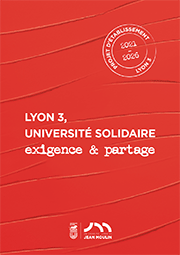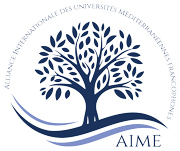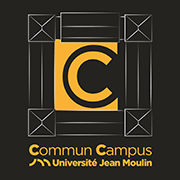AccueilRechercheProgrammes et productions scientifiquesThèsesThèses soutenuesThèses soutenues - 2006-2021Thèses soutenues - 2017
-
Partager cette page
- Recherche,
- Philosophie,
VALENCE Arnaud
Esquisse d'une dualité géométrico-algébrique multidisciplinaire : la dualité d'Isbell
Publié le 9 juin 2017 – Mis à jour le 3 septembre 2025
Thèse en cotutelle en Philosophie – Étude des Systèmes, soutenue le 30 mai 2017.
Après avoir exposé l'importance des dualités géométrico-algébriques dans l'histoire des mathématiques, la thèse propose de rassembler bon nombre d'entre elle sous une approche unifiée abstraite, la dualité d'Isbell. La dualité d'Isbell est formellement définie comme une adjonction entre un préfaisceau et un copréfaisceau, et permet de définir un nouveau paradigme de constructivité baptisé P3. En mathématique, nous montrons que cette dualité est présente en géométrie algébrique, en géométrie algébrique dérivée, en topologie algébrique et en analyse fonctionnelle. En logique contemporaine, nous montrons qu'elle peut être rendue explicite dans la géométrie de l'interaction de Girard. Nous montrons ensuite comment les sciences appliquées peuvent faire usage de la dualité d'Isbell, en permettant de renouveler significativement les théories. En sciences physiques, nous montrons qu'elle ouvre une perspective dans la théorie quantique des champs, vers la dualisation des représentations de Heisenberg et de Schrödinger. En sciences économiques et sociales, nous montrons qu'elle permet de renouveler la théorie de l'équilibre générale et la théorie de la valeur. En sciences de l'apprentissage, nous montrons qu'il est possible de reconsidérer la théorie de l'enquête de Dewey en termes de dualité espace-action, pour finalement dégager une dualité d'Isbell. Nous concluons en ouvrant un débat sur la notion bachelardienne d'obstacle épistémologique, pour montrer comment P3 peut avoir des difficultés à s'imposer, et en consacrant quelques développements ontologiques sur la nature kantienne et post-hégélienne de la thèse.
After exposing the importance of geometric-algebraic dualities in the history of mathematics, the thesis proposes to bring together many of them under an unified abstract approach, the Isbell duality. The Isbell duality is formally defined as an adjunction between a presheaf and a copresheaf, and allows to define a new paradigm of constructivity called P3. In mathematics, we show that this duality is present in algebraic geometry, derived algebraic geometry, algebraic topology and functional analysis. In contemporary logic, we show that Isbell duality can be made explicit in the geometry of interaction of Girard. We then show how applied sciences can make use of Isbell duality, allowing to significantly renew theories. In physical sciences, we show that it opens a perspective in quantum field theory, towards the dualization of Heisenberg and Schrödinger representations. In economic and social sciences, we show that it allows to renew the general equilibrium theory and the theory of value. In learning sciences, we show that it is possible to reconsider Dewey's theory of inquiry in terms of space-action duality, ultimately to reveal an Isbell duality. We conclude by opening a debate on the Bachelardian notion of epistemological obstacle, showing how P3 can have difficulties to establish itself as reference constructive paradigm, and by devoting some ontological developments to the Kantian and post-Hegelian nature of the thesis.
Mots-clés :
algèbre, géométrie, dualité, constructivisme, théorie des catégories, adjonction
Keywords:
algebra, geometry, duality, constructivism, category theory, adjunction
Directeurs de thèse : MM. Michele ABRUSCI et Jean Baptiste JOINET
Président du jury : M. Giuseppe LONGO
Équipe d'accueil : IRPHIL
After exposing the importance of geometric-algebraic dualities in the history of mathematics, the thesis proposes to bring together many of them under an unified abstract approach, the Isbell duality. The Isbell duality is formally defined as an adjunction between a presheaf and a copresheaf, and allows to define a new paradigm of constructivity called P3. In mathematics, we show that this duality is present in algebraic geometry, derived algebraic geometry, algebraic topology and functional analysis. In contemporary logic, we show that Isbell duality can be made explicit in the geometry of interaction of Girard. We then show how applied sciences can make use of Isbell duality, allowing to significantly renew theories. In physical sciences, we show that it opens a perspective in quantum field theory, towards the dualization of Heisenberg and Schrödinger representations. In economic and social sciences, we show that it allows to renew the general equilibrium theory and the theory of value. In learning sciences, we show that it is possible to reconsider Dewey's theory of inquiry in terms of space-action duality, ultimately to reveal an Isbell duality. We conclude by opening a debate on the Bachelardian notion of epistemological obstacle, showing how P3 can have difficulties to establish itself as reference constructive paradigm, and by devoting some ontological developments to the Kantian and post-Hegelian nature of the thesis.
Mots-clés :
algèbre, géométrie, dualité, constructivisme, théorie des catégories, adjonction
Keywords:
algebra, geometry, duality, constructivism, category theory, adjunction
Directeurs de thèse : MM. Michele ABRUSCI et Jean Baptiste JOINET
Membres du jury :
- Michele ABRUSCI, Professore ordinario, Università degli Studi di Roma Tre (Italie),
- Mario CASTELLANA, Professore associato, Università del Salento, Lecce (Italie),
- Jean-Baptiste JOINET, Professeur des universités, Université Jean Moulin Lyon 3,
- Giuseppe LONGO, Directeur de recherches au CNRS, École Nationale Supérieure, Paris,
- Angelo Maria PETRONI, Professore ordinario, Università Roma La Sapienza (Italie),
- Jean-Jacques SZCZECINIARZ, Professeur des universités, Université Paris Diderot Paris 7.
Président du jury : M. Giuseppe LONGO
Équipe d'accueil : IRPHIL
Décision : Admis
Documentation
Mise à jour : 3 septembre 2025







